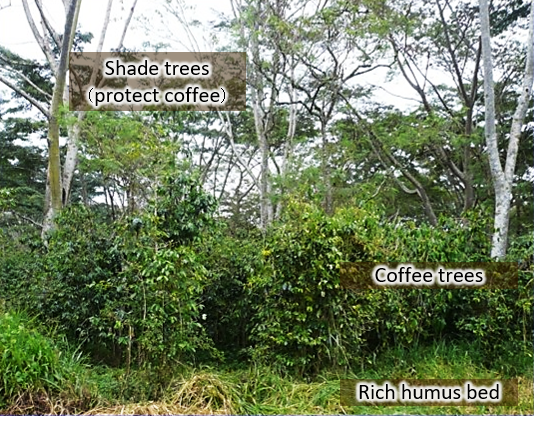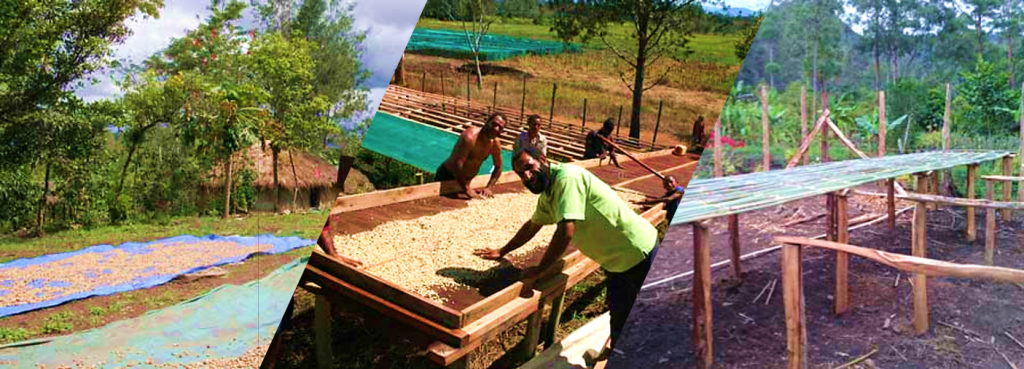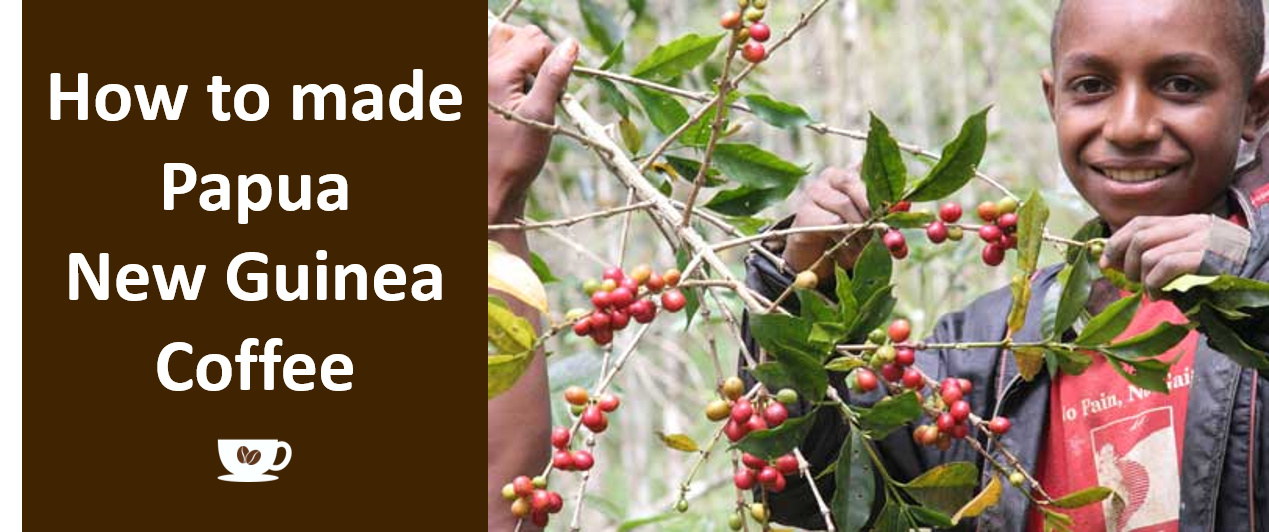Cultivation Process

White pretty flowers bloom every year on coffee trees, which bear red coffee cherries similar to cherry fruit.
1. Planting seeds: Natural coffee cultivation in the forest
2. Flowers bloom: White flowers bloom about 3 years after sowing
3. Bear fruit: Small green berries after the flowers fall
4. Harvest: Harvest when the berries ripen to deep red
After harvest

5. Remove
Red ripe coffee cherries are harvested by hand picking. Cherry flesh over coffee beans is removed.
6. Washing
Beans are washed away by clean water and are dried in the sunshine. Parchments covered with hard cream color shell are obtained. Coffee raw beans of deep green color are after removing the hard shell by dry mill.
7. Coffee dry
Large coffee plantation of other countries use heating air drier by gas or electricity for coffee parchment after wet process, which leads degradation of flavor and taste due to high temperature of beans heated in the process. One the other hand, coffee productions by local communities in PNG use natural sun drying, which realizes most excellent coffee flavor.
8. Villagers hand sorting defects from raw beans
In Papua New Guinea, even today there are many areas that does not have access to electricity, hence their conventional method to conduct hand sorting of defects is by pulling a blue sheets on the patio/floor during the day in the sunlight.
Characteristics of MG Corporation’s coffee cultivation
Forest Coffee
In recent years, large-scale coffee plantations have been developed around the world, and high agricultural technology has been adopted. However, in Papua New Guinea, since it got independence from Australia in 1975, it promoted nation-building with its own power, such as controlling the capital of foreign companies, and took its own path until today without being swallowed by the vortex of modernization of the global coffee industry.
Natural coffee cultivation in the forest has been inherited to the present day, and coffee trees grow in ancient forests cannot be accessed by conventional coffee processing machines. Hence, the richly flavorful coffee beans that have been blessed by the forest are harvested.
While preserving these traditions, MG Corporation will continue to produce coffee in the forest with a gentle aroma with the people of the Highlands.
Shade tree
The shade tree protects the coffee tree from strong sunlight and stores humus at the root to prevent the soil from flowing out from tropical rain.
The climate of the plateau and the rich forest protect delicate Arabica coffee trees such as Typica Bourbon, which are vulnerable to diseases and pests, and enable natural coffee cultivation.
Coffee beans are grown in the forest just like the fruits of the forest and can feel a gentle flavour of the nature of the South Pacific.

Construction of Coffee dry station

Coffee parchments are laid on patio in PNG. Papua New Guinea is one of the strong rain areas in the world. The sun dry process some time takes time particular in rainy seas season, which causes too much formation that causes flavor degradation.
Construction of dry bed is on the way to improve flavor quality with wood and bamboo from local forest in the village. Villagers are starting production of premium coffee for export.
Introduced a solar system
Without a good working environment and decent lighting people cannot sort coffee efficiently and correctly. Hence, to improve the quality and increase efficiency we have introduced a solar system with sorting tables and benches. These were easily made up by our local carpenters. These tables speed up the sorting process, which then is also more easily supervised.
Issue of PNG Coffee Production
Parchment has very good advantage in storage and transportation. Moreover, farmers are able to sell those by high price to lead formers income improvement. However, most former groups have only humane power tools to produce coffee parchment. One of issues is electricity. No electro service is there in most of coffee area.

